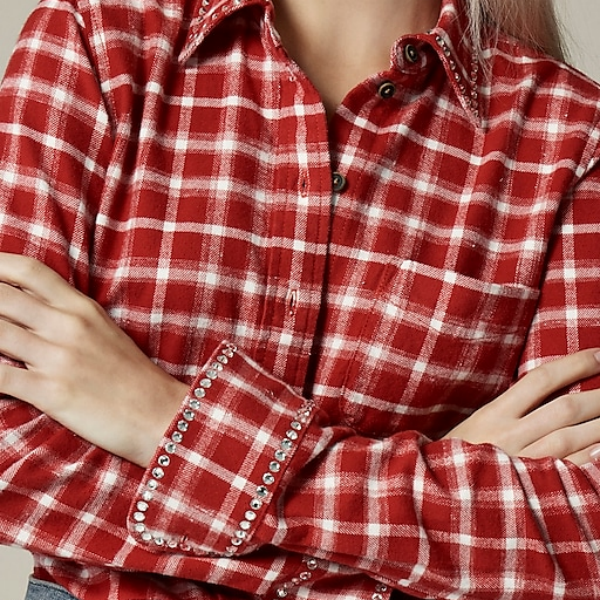Contents
The Origins of Shirts
Ancient Beginnings
The story of the shirt begins in ancient times, long before the term “shirt” was even coined. The earliest form of shirts can be traced back to ancient Egypt, where people wore simple, T-shaped garments made from linen. These early shirts were designed to keep the body cool in the scorching heat of the desert. The Egyptians, known for their intricate weaving techniques, used linen to create a lightweight and breathable fabric that served as the foundation for the first shirts.
In ancient Rome, tunics were the garment of choice for both men and women. These tunics, made from wool or linen, were the precursors to modern shirts. They were simple in design, usually consisting of a rectangular piece of fabric with holes for the head and arms. Tunics were worn as an undergarment beneath togas or on their own, depending on the social status of the wearer.

Medieval Innovations
During the Middle Ages, shirts began to take on a more recognizable form. In Europe, shirts were worn as an undergarment, made from linen or wool, and were primarily used to protect outer garments from sweat and dirt. These early medieval shirts were loose-fitting, long-sleeved, and extended to the knees. They were often plain and undecorated, as they were not meant to be seen by others.
As tailoring techniques improved, shirts became more fitted, with features like buttons and cuffs emerging. By the 14th century, the shirt had evolved into a more structured garment, with a collar and front opening. This period also saw the introduction of different fabrics, such as silk, which were used by the wealthy for more luxurious shirts.
The Renaissance: A Turning Point in Shirt Fashion
The Rise of the Shirt as Outerwear
The Renaissance period marked a significant shift in the history of shirts. During this time, shirts began to be worn as outer garments rather than just undergarments. The shirt became a symbol of status and wealth, with elaborate designs and luxurious fabrics becoming increasingly popular.
Renaissance shirts were often adorned with lace, embroidery, and ruffles. The collar, in particular, became a focal point, with high, stiff collars known as “ruffs” becoming a fashion statement among the nobility. These ruffs were often made from fine lace and could be incredibly elaborate, sometimes requiring the support of a wire frame to maintain their shape.
The Introduction of the Collar and Cuffs
The Renaissance also saw the introduction of the modern collar and cuffs. These elements were initially detachable, allowing them to be laundered separately from the rest of the shirt. The collar, often starched to keep it stiff, became a prominent feature of the shirt, symbolizing both fashion and cleanliness.
The cuffs, like the collar, were also detachable and often made from lace or other fine materials. They were fastened with ribbons or buttons and added an extra layer of elegance to the shirt. This period laid the foundation for many of the shirt features we recognize today, such as the button-up front and structured collar.
The Industrial Revolution and Mass Production
The Birth of the Modern Shirt
The Industrial Revolution brought about significant changes in the production of clothing, including shirts. With the advent of sewing machines and advances in textile manufacturing, shirts could be produced more quickly and affordably. This period marked the birth of the modern shirt, as we know it today.
The introduction of the button-down shirt in the 19th century revolutionized men’s fashion. This style of shirt, with a front placket and buttoned collar, became the standard for men’s formal wear. The button-down shirt was initially popularized by British polo players, who needed a shirt that would stay in place during play. The buttoned collar prevented the shirt from flapping in the wind, making it both functional and stylish.
The Spread of Ready-to-Wear Shirts
The mass production of shirts during the Industrial Revolution led to the widespread availability of ready-to-wear garments. Prior to this, shirts were typically custom-made by tailors, a luxury that only the wealthy could afford. The advent of ready-to-wear shirts made fashionable clothing accessible to the masses, democratizing fashion in a way that had never been seen before.

Shirts became a staple in men’s wardrobes, with different styles emerging to suit various occasions. The white dress shirt, in particular, became a symbol of professionalism and respectability. Worn with a suit and tie, the white shirt was the standard for business attire, a tradition that continues to this day.
The Evolution of Women’s Shirts
From Underwear to Outerwear
While the history of men’s shirts is well-documented, the evolution of women’s shirts is equally fascinating. For much of history, women wore chemises—loose, shirt-like undergarments—beneath their dresses. These chemises served a similar purpose to men’s shirts, protecting outer garments from sweat and dirt.
It wasn’t until the 19th century that women began wearing shirts as outerwear. The “shirtwaist” became popular during this time, a blouse that mimicked the style of a man’s shirt. The shirtwaist was often paired with a long skirt and was considered a practical and fashionable choice for working women.
The Influence of Feminism on Shirt Fashion
The early 20th century saw a significant shift in women’s fashion, influenced by the feminist movement. Women began to adopt more practical clothing, including shirts, as they entered the workforce and participated in activities like sports. The introduction of the “blouse” provided women with a more feminine version of the shirt, often featuring softer fabrics, ruffles, and lace.
The iconic “pussy bow” blouse, with its tied bow at the neck, became a symbol of women’s empowerment in the workplace. This style was popularized in the 1960s and 70s and continues to be a fashionable choice for professional women today.
The Shirt in Modern Fashion
The Casual Revolution
The 20th century brought about significant changes in fashion, with the shirt evolving to suit the needs of a more casual society. The invention of the T-shirt, originally designed as an undergarment, revolutionized casual wear. The T-shirt, with its simple design and comfortable fit, quickly became a staple in both men’s and women’s wardrobes.
The casual revolution also saw the rise of the polo shirt, popularized by tennis players in the 1920s. The polo shirt, with its soft collar and short sleeves, provided a more relaxed alternative to the traditional button-down shirt. It became a popular choice for casual occasions and remains a versatile wardrobe essential today.
The Influence of Pop Culture
Pop culture has played a significant role in shaping modern shirt fashion. From the iconic white T-shirt worn by James Dean in “Rebel Without a Cause” to the flannel shirts popularized by the grunge movement in the 1990s, shirts have often been at the forefront of fashion trends.
The rise of streetwear in the late 20th and early 21st centuries has further blurred the lines between casual and formal wear. Shirts are now worn in a variety of ways, from oversized and untucked to slim-fitting and tailored. This versatility has solidified the shirt’s place as a timeless and essential piece of clothing.
The Future of Shirts
Sustainability and Innovation
As fashion continues to evolve, the future of shirts is likely to be influenced by sustainability and innovation. With growing awareness of the environmental impact of clothing production, there is a push towards more sustainable materials and manufacturing processes. Organic cotton, recycled fabrics, and ethical production methods are becoming increasingly important in the fashion industry.

Innovation is also playing a key role in the evolution of shirts. Advances in fabric technology, such as moisture-wicking and wrinkle-resistant materials, are making shirts more functional and comfortable. Additionally, the rise of custom-made and personalized shirts, made possible by digital printing and 3D body scanning, is giving consumers more control over their clothing choices.
The Enduring Appeal of the Shirt
Despite the many changes in fashion over the centuries, the shirt remains a beloved and essential garment. Its versatility, comfort, and ability to adapt to different styles and occasions have ensured its place in wardrobes around the world. Whether worn casually with jeans or dressed up with a suit, the shirt continues to be a symbol of style and sophistication.
The Legacy of the Shirt
The invention of the shirt is a story of innovation, adaptation, and enduring appeal. From its humble beginnings as a simple linen garment in ancient Egypt to its status as a fashion icon today, the shirt has come a long way. Its ability to evolve with the times while maintaining its essential characteristics is a testament to its timelessness.
As we look to the future, it is clear that the shirt will continue to play a central role in fashion. With a focus on sustainability, innovation, and personalization, the shirt is poised to remain a wardrobe staple for generations to come. So, the next time you slip on your favorite shirt, take a moment to appreciate the rich history and craftsmanship that have gone into creating this essential piece of clothing.



